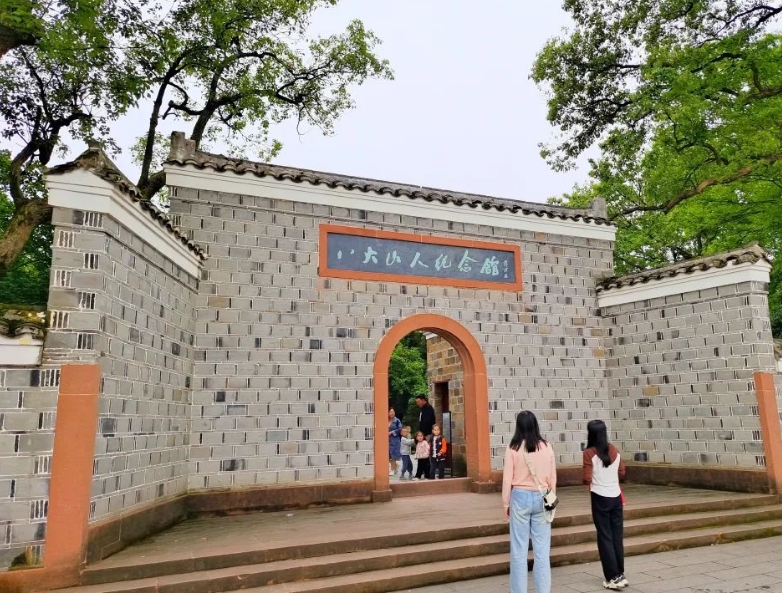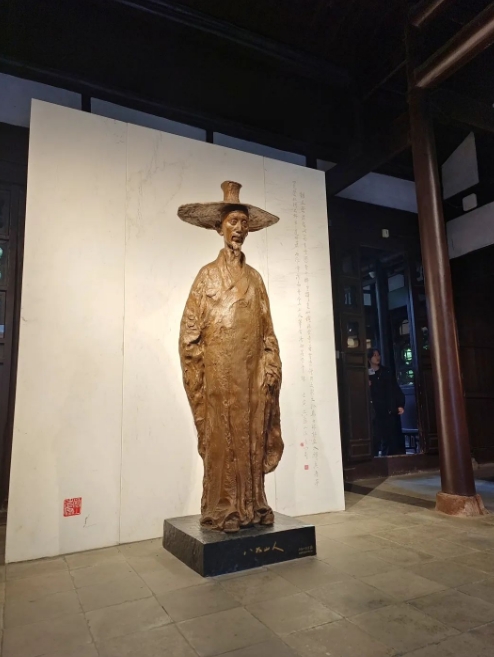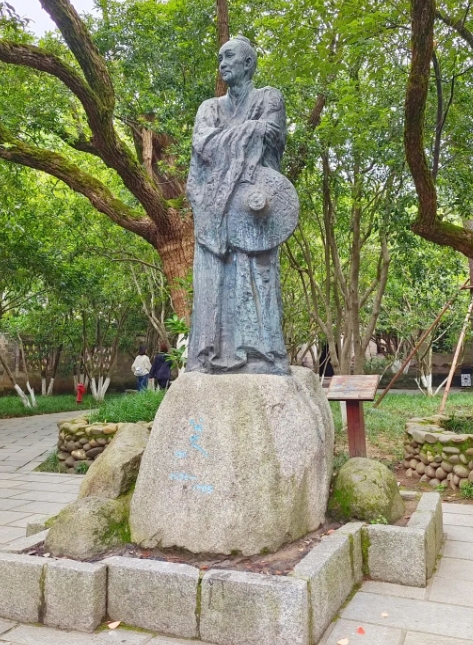
★ Statue of Bada Shanren
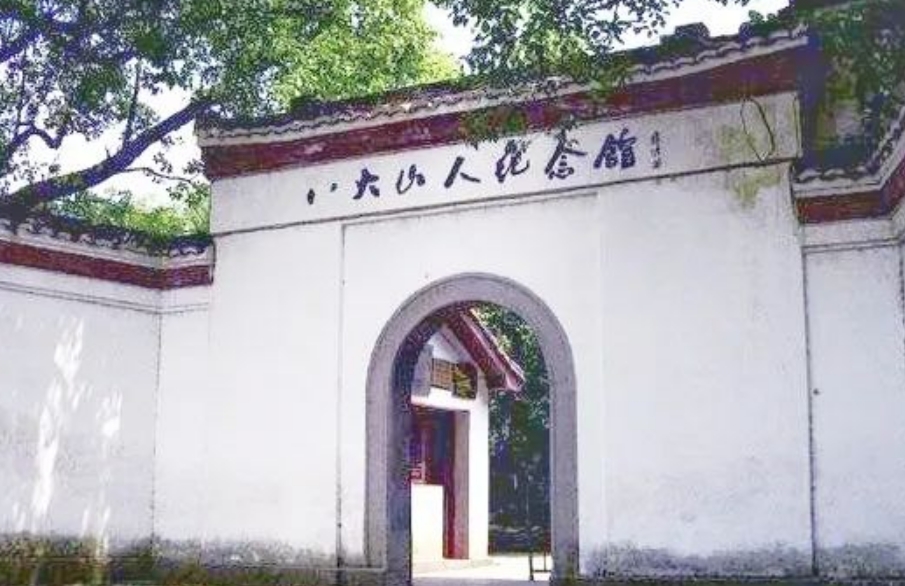
★ The original appearance of the gate of the Memorial Hall of Bada Shanren. The characters on the lintel are written by Guo Moruo.
During the winter vacation in 1987, shortly after the Spring Festival, I and ten classmates rode bicycles from Xiangtang and came to the Memorial Hall of Bada Shanren specially for a visit. At that time, the memorial hall still required tickets for admission (it was opened to the public for free since 2011). The surrounding area was spacious and there were very few tourists. Amidst the ancient trees and green bamboos, the memorial hall seemed quiet and lonely, elegant but not vulgar, very much like Zhu Da’s personality.
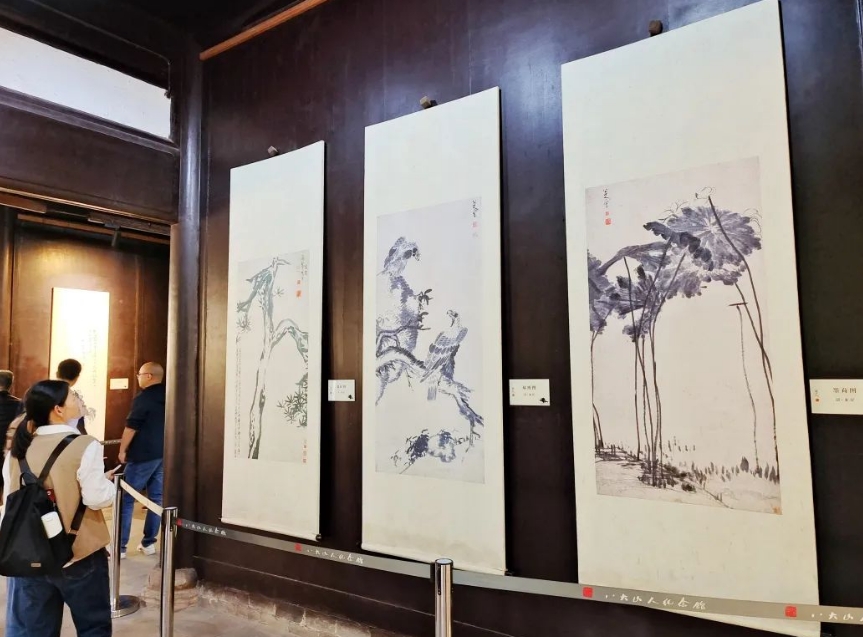
★ Works of Bada Shanren.
Also note that when going to the Memorial Hall of Bada Shanren, one must at least know who Bada Shanren is. This is the most basic point.
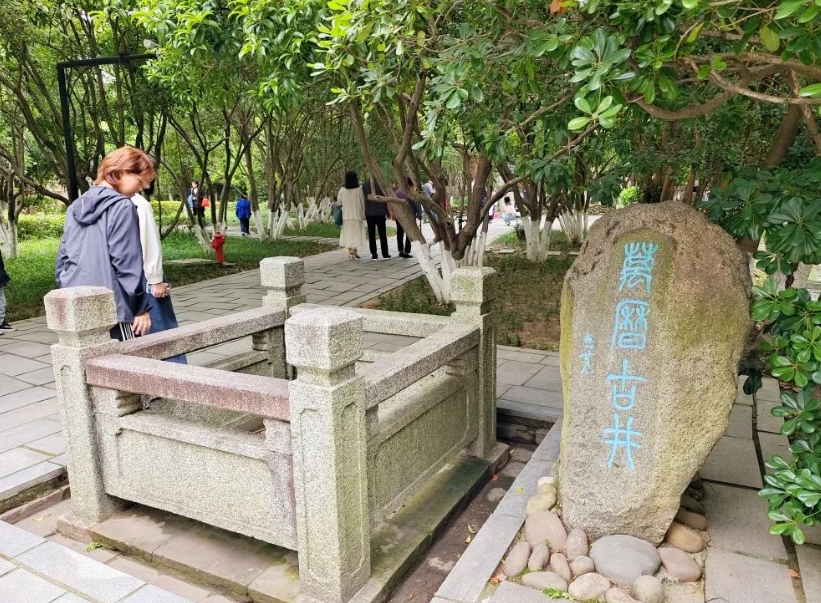
★ Wanli ancient well.
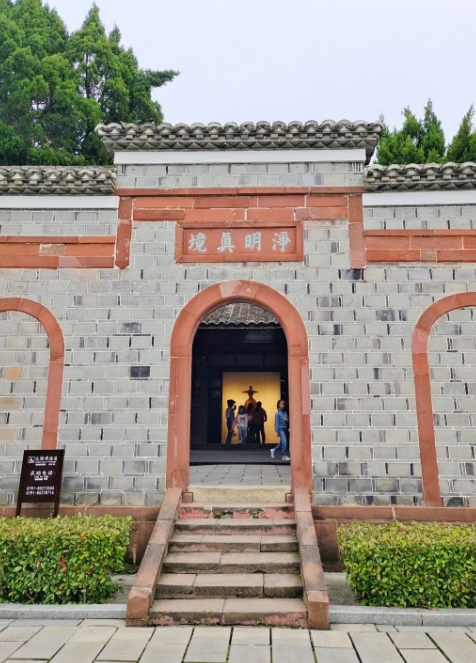
★ The Taoist courtyard is simple and elegant.
💰Ticket: Free
🕰Time: Closed on Mondays. Open from 9 to 17 on Tuesdays to Sundays. Admission stops at 16:30.
📌Address: No. 259, Qingyun Road, Qingyunpu.
🚙Transportation: Exit 2 of Bada Shanren Station on Metro Line 3 and walk 1 kilometer.
